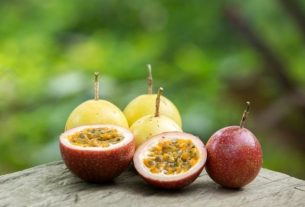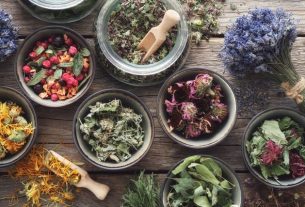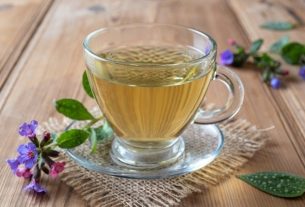Calendula is a medicinal plant, also known as well-me-want, ill-me-wish, wonder, golden daisy or verrucaria, which has anti-inflammatory, antibacterial, antifungal, immunomodulatory, healing, hepatoprotective and antioxidant properties, and can be useful in treating skin problems, especially burns and inflammations, and can also help protect the liver, regulate blood sugar levels and strengthen the immune system.
The scientific name of calendula is Calendula officinalis and can be purchased in health food stores, compounding pharmacies and in some street markets and markets, and can be used in the form of tea, tincture or creams, for example.

What is it for
Due to its properties, calendula serves to bring several health benefits, the main ones being:
1. Accelerates skin healing
Its ability to stimulate healing is the main benefit that calendula is known for, and there are several studies that prove its positive effect on the healing of various types of wounds, from cuts to burns.
This effect appears to be related to its anti-inflammatory, calming and antimicrobial properties, which in addition to reducing pain and swelling in the area, also prevent the development of microorganisms. Furthermore, other studies have also shown that calendula increases blood circulation at the wound site and stimulates the formation of collagen, which are two essential pillars for good healing.
2. Protects the liver
According to some studies carried out on animals, the use of alcoholic calendula extract is capable of protecting liver cells against injuries caused by the use of some medications, especially paracetamol.
3. Fights skin infections and inflammation
In addition to stimulating healing, calendula can also be used to complement the treatment of infected wounds, acne and eczema, as it has a strong antimicrobial action, capable of eliminating fungi, bacteria and parasites. Therefore, cold calendula tea can be a good option for cleaning wounds, for example.
4. Regulates blood sugar levels
Calendula flowers contain compounds that appear to increase the body’s sensitivity to insulin, making blood sugar levels better controlled.
Furthermore, the use of this plant with oral antidiabetics also appeared to increase the effectiveness of these medications, helping to control sugar levels in diabetics.
5. Relieves inflammation of the mucous membranes
Due to its strong anti-inflammatory, calming and healing action, calendula can also be used to reduce inflammation in the mouth, such as canker sores or gingivitis, as well as other body mucous membranes.
In some cultures, calendula tea is also used to alleviate the symptoms of gastric problems, however, there are few studies on this effect.
6. Strengthens the immune system
Calendula has a strong antioxidant action due to its composition rich in alkaloids, carotenoids and flavonoids, which are capable of eliminating free radicals and strengthening the immune system.
Furthermore, some laboratory investigations have also observed that the use of aqueous calendula extracts also appears to increase the activation of lymphocytes, which are important cells of the immune system.
7. Prevents the development of cavities
Calendula can interfere with the formation of cavities due to its antibacterial action against the Streptococcus mutans, which is a bacteria present in the mouth that favors the formation of cavities. There are some mouthwashes that contain Calendula officinalis and which can be used to maintain oral hygiene, as they reduce bacterial plaque and prevent gum irritation.
In addition, it also has antifungal activity against Candida albicans, which is a fungus that can cause oral candidiasis.
How to use calendula
The most used part of calendula is its dried flowers, which can be used to make teas, infusions, baths, ointments, poultices or tinctures.
Some of the most popular ways to use calendula at home include:
- Calendula tea: Place 10 to 15 grams of calendula flowers in 1 liter of boiling water, cover and let it rest for about 5 minutes. Then strain and drink up to 3 times a day. You can also use gauze moistened with this tea to clean a wound on the skin;
- Calendula poultice: knead calendula leaves and flowers in a clean cloth (gauze) and place on the wound or acne, leaving it to act for 30 minutes;
- Gargling: Prepare warm calendula tea to gargle for 30 seconds and repeat 3 to 5 times;
- Calendula tincture: 20 to 40 drops, 3 times a day, for internal use. For external use, you can place the drops on a compress;
- Calendula Cream: apply a small amount of cream to the skin 2 to 3 times a day, avoiding use for more than 2 weeks.
To facilitate application to the skin, calendula can also be found in some pharmacies and health food stores in the form of an ointment, which may contain other natural substances that also help with healing.
Possible side effects
Although rare, some people may experience symptoms of an allergic skin reaction, such as redness, swelling and itching. In these cases, you must wash your skin with cold water to remove the substance.
Who shouldn’t use
Calendula should not be used by pregnant women, breastfeeding women and children under 6 years of age due to the lack of studies proving its safety.

Sign up for our newsletter and stay up to date with exclusive news
that can transform your routine!
Warning: Undefined array key "title" in /home/storelat/public_html/wp-content/plugins/link-whisper-premium/templates/frontend/related-posts.php on line 12
Warning: Undefined array key "title_tag" in /home/storelat/public_html/wp-content/plugins/link-whisper-premium/templates/frontend/related-posts.php on line 13




